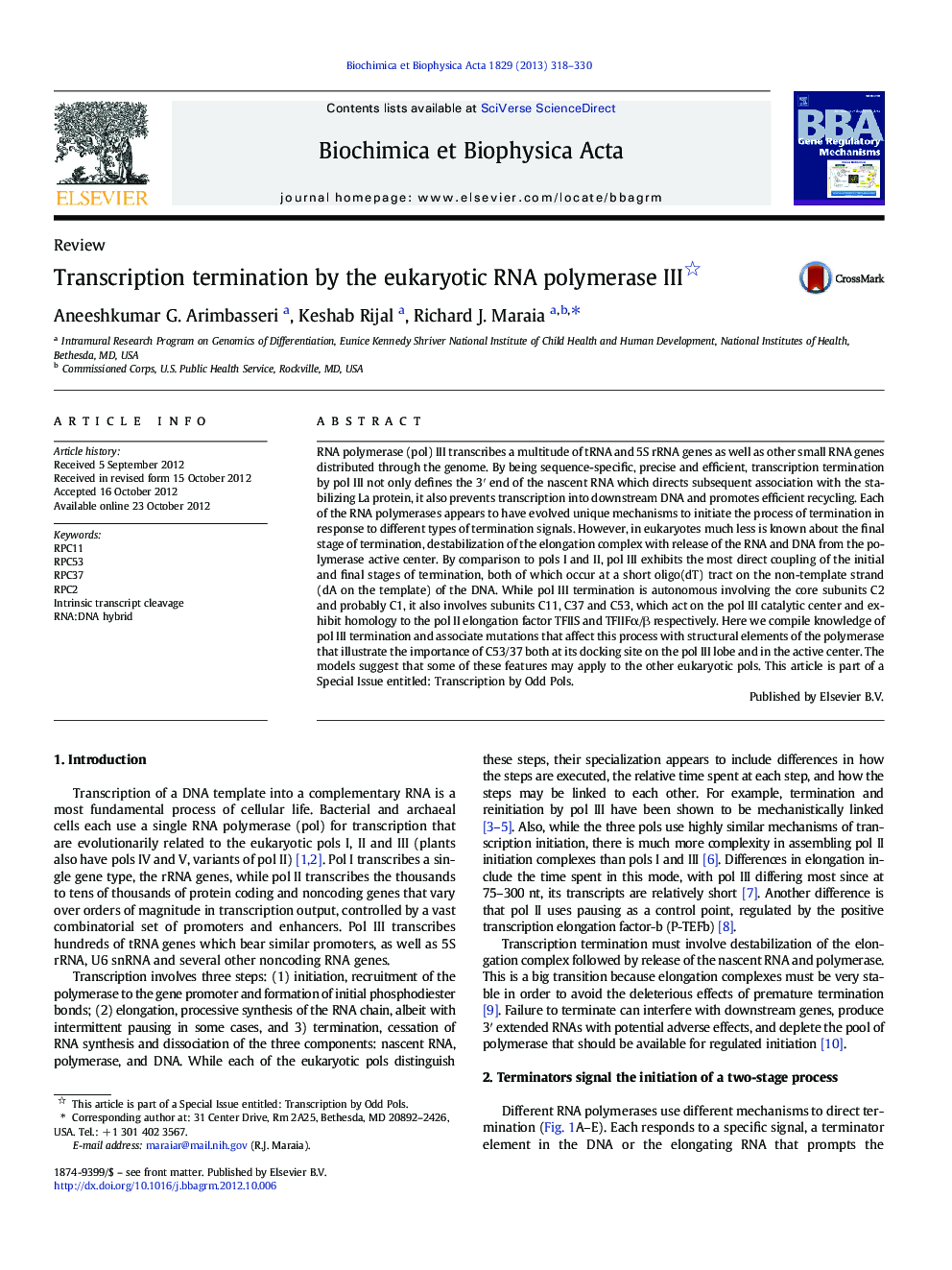| Article ID | Journal | Published Year | Pages | File Type |
|---|---|---|---|---|
| 1946505 | Biochimica et Biophysica Acta (BBA) - Gene Regulatory Mechanisms | 2013 | 13 Pages |
RNA polymerase (pol) III transcribes a multitude of tRNA and 5S rRNA genes as well as other small RNA genes distributed through the genome. By being sequence-specific, precise and efficient, transcription termination by pol III not only defines the 3′ end of the nascent RNA which directs subsequent association with the stabilizing La protein, it also prevents transcription into downstream DNA and promotes efficient recycling. Each of the RNA polymerases appears to have evolved unique mechanisms to initiate the process of termination in response to different types of termination signals. However, in eukaryotes much less is known about the final stage of termination, destabilization of the elongation complex with release of the RNA and DNA from the polymerase active center. By comparison to pols I and II, pol III exhibits the most direct coupling of the initial and final stages of termination, both of which occur at a short oligo(dT) tract on the non-template strand (dA on the template) of the DNA. While pol III termination is autonomous involving the core subunits C2 and probably C1, it also involves subunits C11, C37 and C53, which act on the pol III catalytic center and exhibit homology to the pol II elongation factor TFIIS and TFIIFα/β respectively. Here we compile knowledge of pol III termination and associate mutations that affect this process with structural elements of the polymerase that illustrate the importance of C53/37 both at its docking site on the pol III lobe and in the active center. The models suggest that some of these features may apply to the other eukaryotic pols. This article is part of a Special Issue entitled: Transcription by Odd Pols.
► The rU:dA(5–6) hybrid is a destabilizing component during transcription termination. ► Pols I, II and III initiate termination differently but may share features thereafter. ► Several pol III subunits, including C2, C11, C53 and C37 contribute to termination. ► C37/53 and C11 are homologous to TFIIFα/β and TFIIS, respectively. ► Extraneous factors may be recruited to affect pol III termination in some cases.
